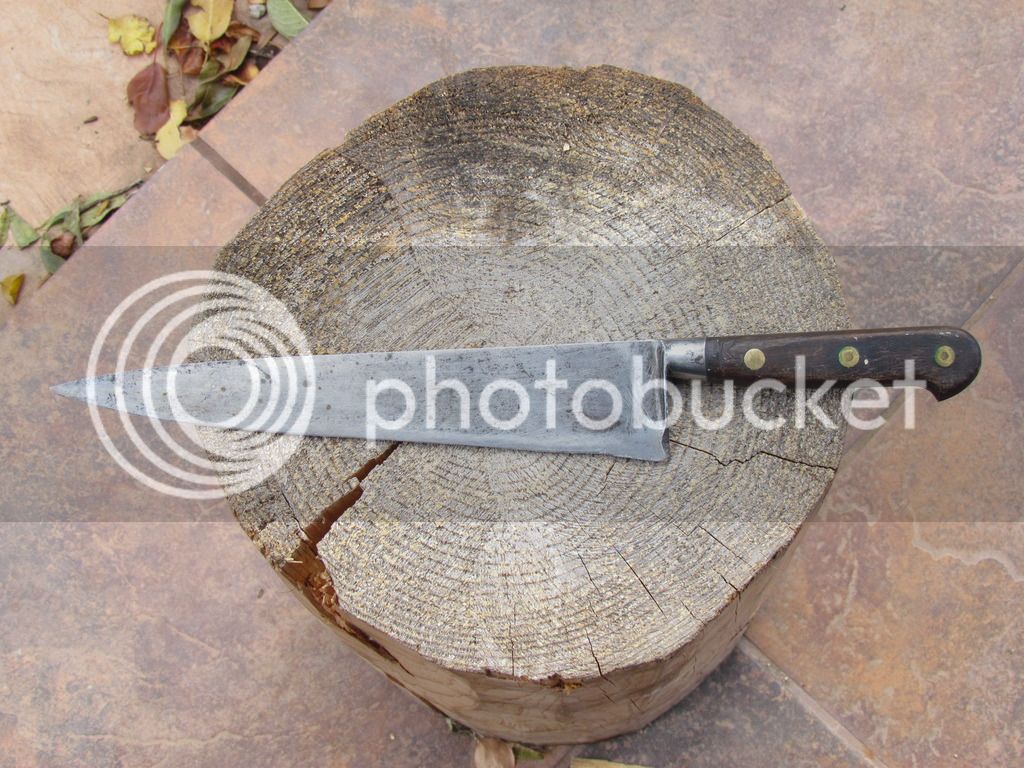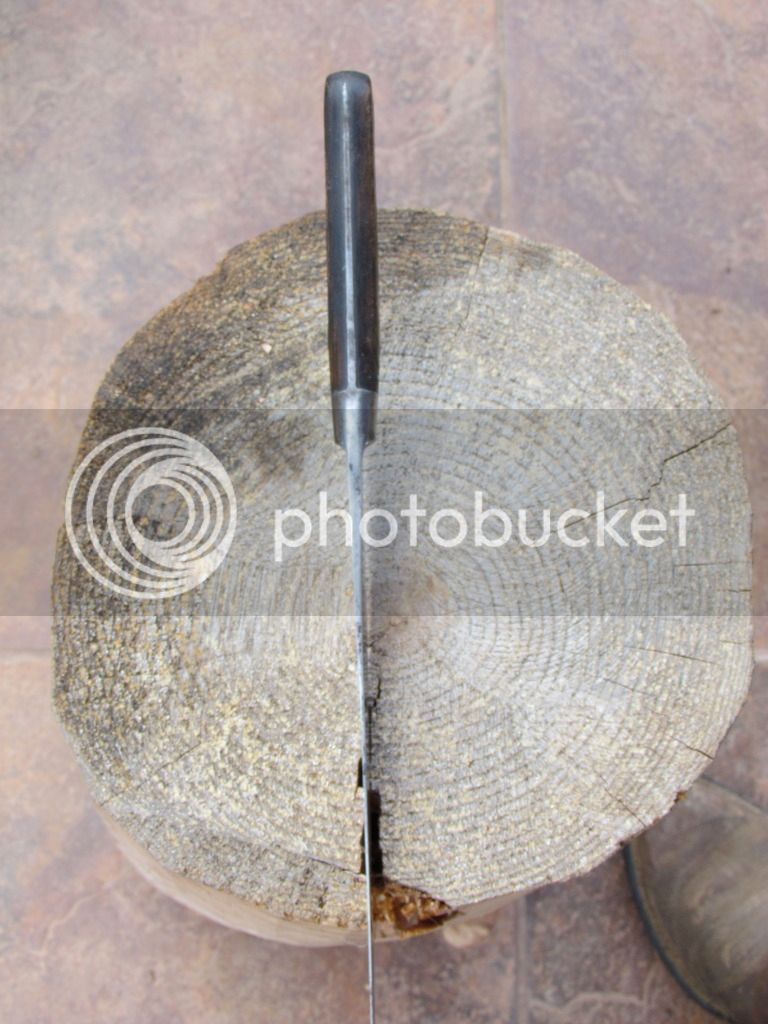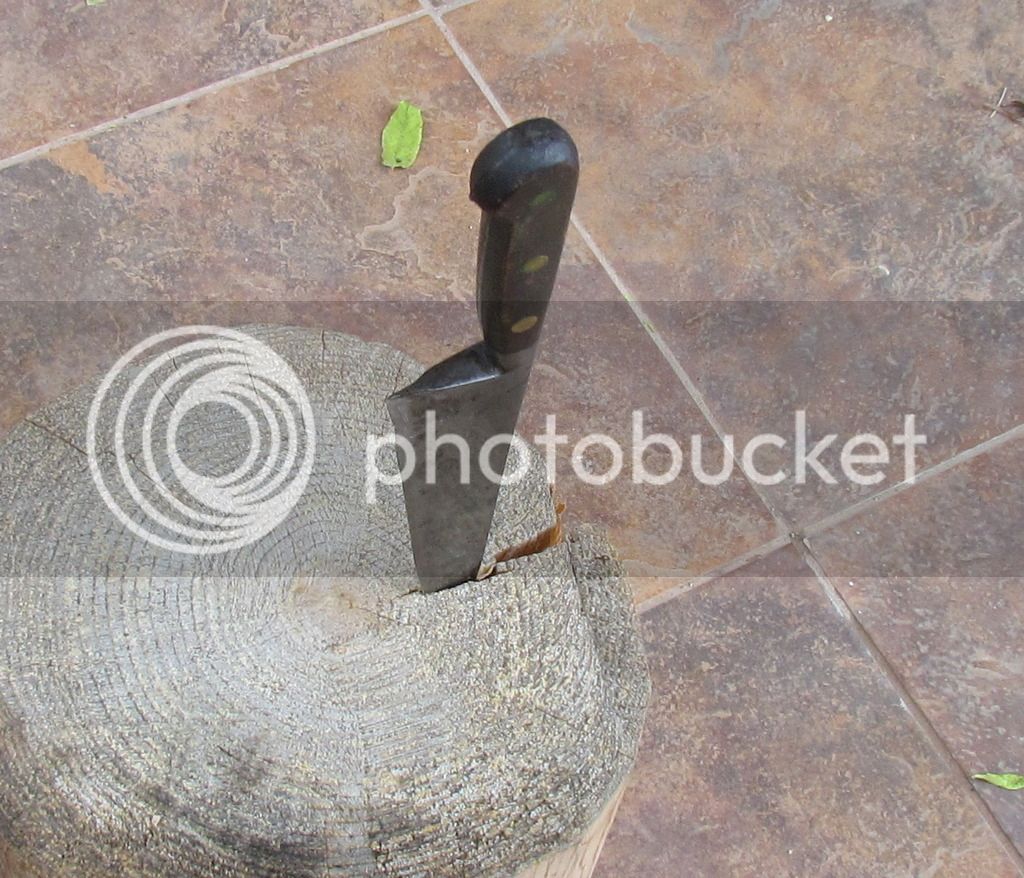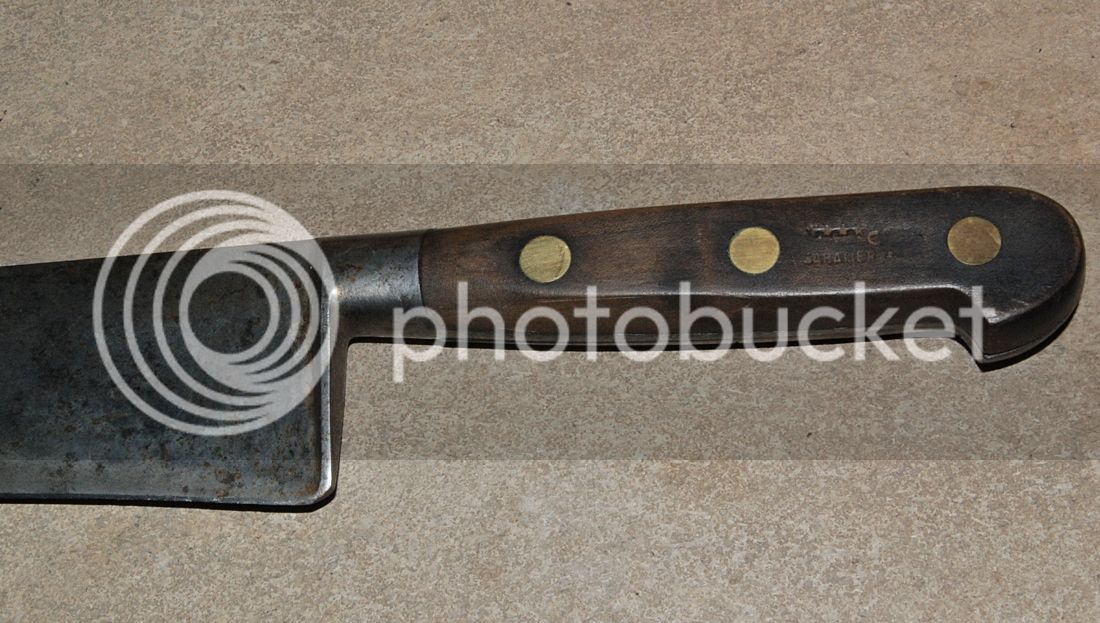- Joined
- Feb 18, 2015
- Messages
- 1,703
- Reaction score
- 83
This one looks like a French chef's knife. I didn't think it was of interest for anything but the old steel, until I read some of the French imported knives that were traded into this country did look like chef's knifes, so I thought it was worth showing off. It has no markings other than a "K" roughly filed into the wooden handle on the left side. It is forged with a tapered tang, and also with a guard forged into the metal as one piece with the blade. The brass "rivets" are actually brass pins through round brass escutcheons on both sides.
I got this knife at an estate sale of a collector of western memorabilia, all kinds of stuff from rusty dusty mining equipment to tack to old guns and even 50's movie stuff and cap guns. This was sitting in a box with a price of 25 cents on it. It appears to have been very well made with complex forging and a high polish:



So, would it be historically correct for a hunter/trapper? and if so for who and for what period(s)?
I got this knife at an estate sale of a collector of western memorabilia, all kinds of stuff from rusty dusty mining equipment to tack to old guns and even 50's movie stuff and cap guns. This was sitting in a box with a price of 25 cents on it. It appears to have been very well made with complex forging and a high polish:



So, would it be historically correct for a hunter/trapper? and if so for who and for what period(s)?







